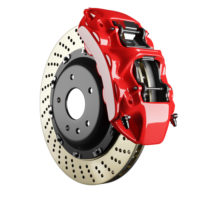Automakers Agree to Make Important Safety Feature Standard on New Cars

According to an announcement recently made by the National Highway Traffic Safety Administration (NHTSA), the 20 automakers dominating 99% of the American car market have agreed to make Automatic Emergency Braking (AEB) a standard feature on all new cars by the fall of 2022. Due to the strong evidentiary support for the efficacy of this feature, the decision has been lauded by both the NHTSA and the Insurance Institute for Highway Safety (IIHS).
AEB systems have been available for years on luxury vehicles, beginning with a 2000 model year Mercedes-Benz. The accident-predicting feature has only recently become available on mid-market cars, generally as an optional feature. AEB systems use a combination of lasers, cameras, and radar to scan the roadway for hazards, including slowing traffic, objects, or pedestrians. If an object is in the road with which the car was on a collision course, the system would warn the driver that evasive maneuvers or braking were needed to avoid a crash. If the driver didn’t react, or didn’t react sufficiently, the car’s automation would then take over in one of two ways, depending both on what action the driver takes and the way that the AEB system in that vehicle is designed. Crash-imminent braking will apply the car’s brakes, even when the driver takes no action. Dynamic brake support will increase the pressure that the driver is already applying to the brakes. Front-Crash Warning (FCW) is an element of AEB, but comes on some vehicles as a standalone feature. These systems will scan the roadway and notify drivers of upcoming hazards, but cannot apply the brakes on the driver’s behalf.
The IIHS has been conducting research on AEB and FCW systems, and has published a number of studies that show the features’ high rates of success in preventing accidents. According to one study comparing the rates of police-reported crash involvement for cars with and without AEB or FCW systems, cars with FCW systems saw their likelihood of crash involvement decrease by 23%, and cars with AEB systems were 39% less likely to be involved in a police-reported crash than cars without either an AEB or FCW system. The IIHS estimates that, if every car on the road had had an AEB system in 2013 (the year for which data was analyzed), 700,000 accidents would have been prevented, along with 300,000 injuries resulting from those accidents.
Experts warn, however, that automated safety features such as AEB systems are not infallible. Whether due to mechanical failure, or a hazard appearing in the roadway too quickly for even the automated braking to react, the systems cannot prevent every accident. Drivers remain liable for any accidents or injuries caused by their vehicles, and must remain aware of any dangers in the road ahead at all times.
If you or someone you love has been injured in an accident with a negligent driver, seek experienced legal assistance to ensure that you receive the compensation for your injuries that you deserve, and contact Hudson Valley accident lawyers, the Law Office of Taran M. Provost, PLLC for a consultation on your case at 845-675-3243, with offices conveniently located in Mahopac and Poughkeepsie.
